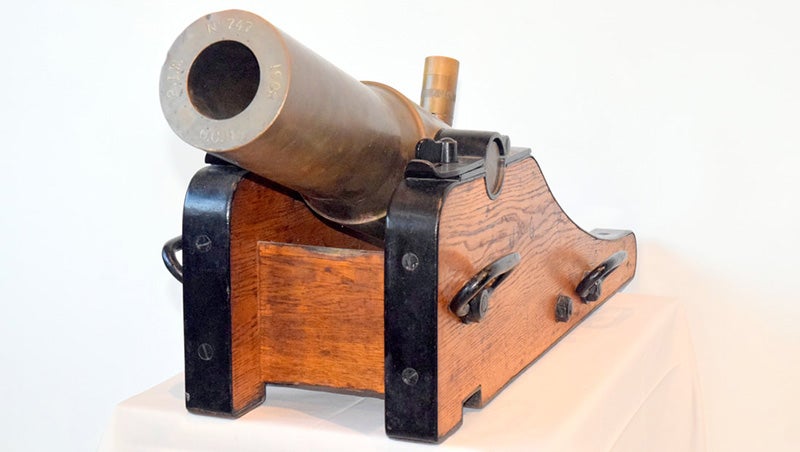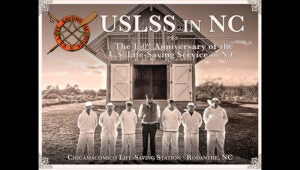USLSS in NC: Practice makes perfect
Published 1:09 pm Thursday, May 9, 2024

- Lyle gun. Courtesy Chicamacomico Historical Association
|
Getting your Trinity Audio player ready...
|
By Jen Carlson
On February 5, 1882, the schooner Mary L. Vankirk found herself in storm and ended up losing her sails and sprung a leak. Quickly, she became water-logged and unmanageable.
The initial plan by the five-man crew was to seek refuge in Hatteras Inlet but with fears rising that she would capsize at any moment, Captain Ballance decided to intentional ground her.
She was spotted by the crew at the Chicamacomico station as she was flying colors of distress. Initially, the life-saving crew left the station with the surfboat but the heavy surf proved the breeches buoy would be more effective. Having to return to the station to swap equipment, the life-savers arrived on scene about 15 minutes after the schooner struck the sandbar about half a mile north of the station. The vessel was so close to shore that Keeper, Little Banister “Capt. Ban” Midgett III, was able wade into the waist-deep water to cast a heaving-line to the crew huddled in the rigging.
Waves were relentlessly beating the small schooner so speed was of the essence. As quickly as possible, the crew in the rigging hauled off the whip-line and hawser so within minutes, the breeches buoy was sent out to the retrieve the crew. Within 15 minutes of the hawser being set up, all five of the crew were safely on shore and thankful to be on dry land. The rescue was over so quickly that by the time the Pea Island crew arrived to assist, the five survivors were already at the station.
A portion of the cargo as well as the effects of the Vankirk crew were retrieved during low-tide but the vessel itself was deemed a total loss. Captain Ballance later sent a thank-you note to District Six Superintendent Joseph W. Etheridge expressing his gratitude for the prompt assistance as well as recognizing not only the crew’s efficiency but also their care for in providing for the Vankirk’s crews needs.
All in a Day’s Work
Sometimes it’s the long goal: On November 28, 1883, during a gale, the schooner Annie S. Carll ran aground about half a mile of the Nags Head station. The high tide drove the schooner so far up the beach, the four-man crew was able to reach shore safely without assistance.
The beach patrol found the vessel on his return trip but the vessel’s captain and one other crewman beat him back to the station. The life-saving crew immediately started towards the vessel and landed all the crew’s provisions and personal effects in addition to lowering the sails and securing the vessel.
After determining it would take time to build a launch to get her back afloat, the Carll’s captain released his crew to return home to Virginia. The schooner remained on the beach until the following spring when the station opened for the season and the crew was able to get her once again safely afloat.
We hope you will join us October 11-13, 2024 in celebration as we recognize the #LegacyofLifeSaving and the lasting impact of these often-unsung heroes. Go to chicamacomico.org for details of the events.
READ MORE IN THIS SERIES HERE:
SUBSCRIBE TO THE COASTLAND TIMES TODAY!






